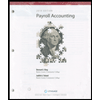
a.
An accounting equation is formed by three main elements, namely, asset account, liability account and equity account. The formation is done as: Assets = Liabilities + Equity.
Every business transaction can be identified and analyzed through this accounting equation for the purpose of further analyzing the effects of each such transaction on the asset, liability and equity.
To Record: The
b.
An accounting equation is formed by three main elements, namely, asset account, liability account and equity account. The formation is done as: Assets = Liabilities + Equity.
Every business transaction can be identified and analyzed through this accounting equation for the purpose of further analyzing the effects of each such transaction on the asset, liability and equity.
To
c.
Accounting Equation:
An accounting equation is formed by three main elements, namely, asset account, liability account and equity account. The formation is done as: Assets = Liabilities + Equity.
Every business transaction can be identified and analyzed through this accounting equation for the purpose of further analyzing the effects of each such transaction on the asset, liability and equity.
To Prepare: The
Want to see the full answer?
Check out a sample textbook solution
Chapter 2 Solutions
FINANCIAL & MANAG ACCT (CH. 1 - 24 LOOSE
- Please provide the correct answer to this financial accounting problem using accurate calculations.arrow_forwardYour company purchases $7,200 of supplies, recording them as assets. At year end, a physical count shows $2,500 of supplies on hand. The year-end adjusting entry debits supplies expense and credits supplies on hand for $2,500. The correcting entry will _.arrow_forwardKindly help me with this general accounting questions not use chart gpt please fast given solutionarrow_forward
- Principles of Accounting Volume 2AccountingISBN:9781947172609Author:OpenStaxPublisher:OpenStax College
 Accounting Information SystemsAccountingISBN:9781337619202Author:Hall, James A.Publisher:Cengage Learning,
Accounting Information SystemsAccountingISBN:9781337619202Author:Hall, James A.Publisher:Cengage Learning,  Cornerstones of Cost Management (Cornerstones Ser...AccountingISBN:9781305970663Author:Don R. Hansen, Maryanne M. MowenPublisher:Cengage Learning
Cornerstones of Cost Management (Cornerstones Ser...AccountingISBN:9781305970663Author:Don R. Hansen, Maryanne M. MowenPublisher:Cengage Learning





